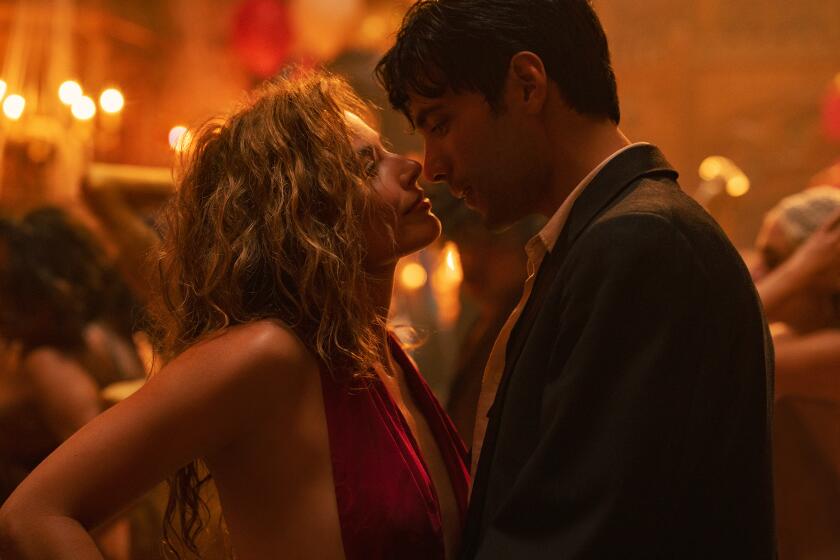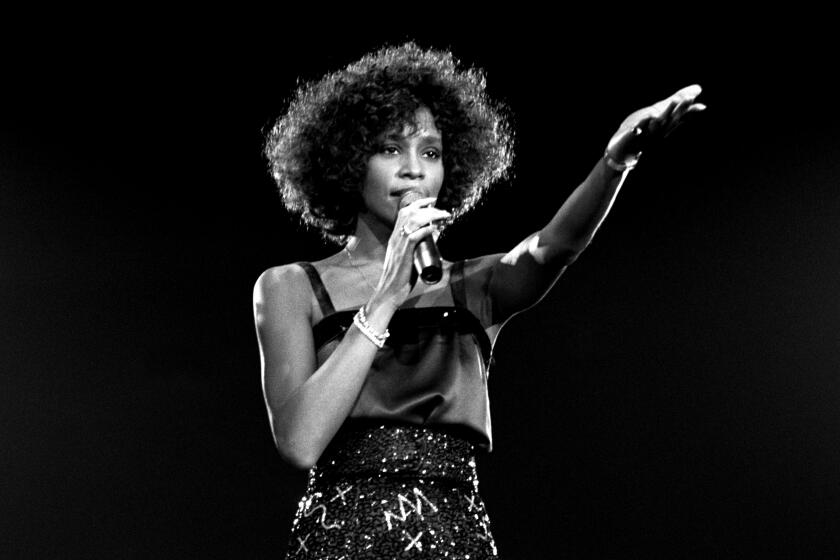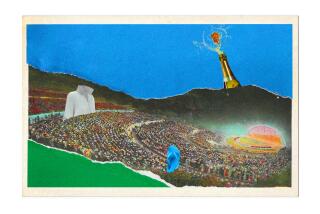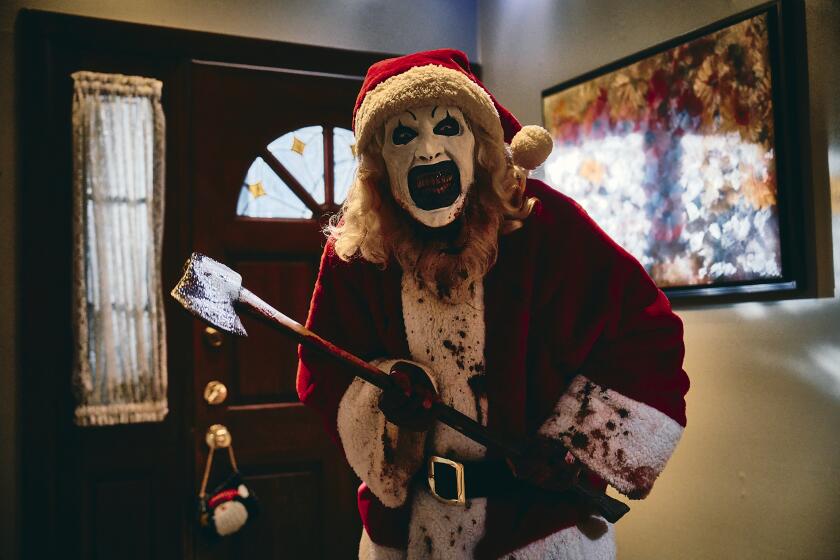Whatâs the real-life Hollywood history behind âBabylonâ? We asked the experts
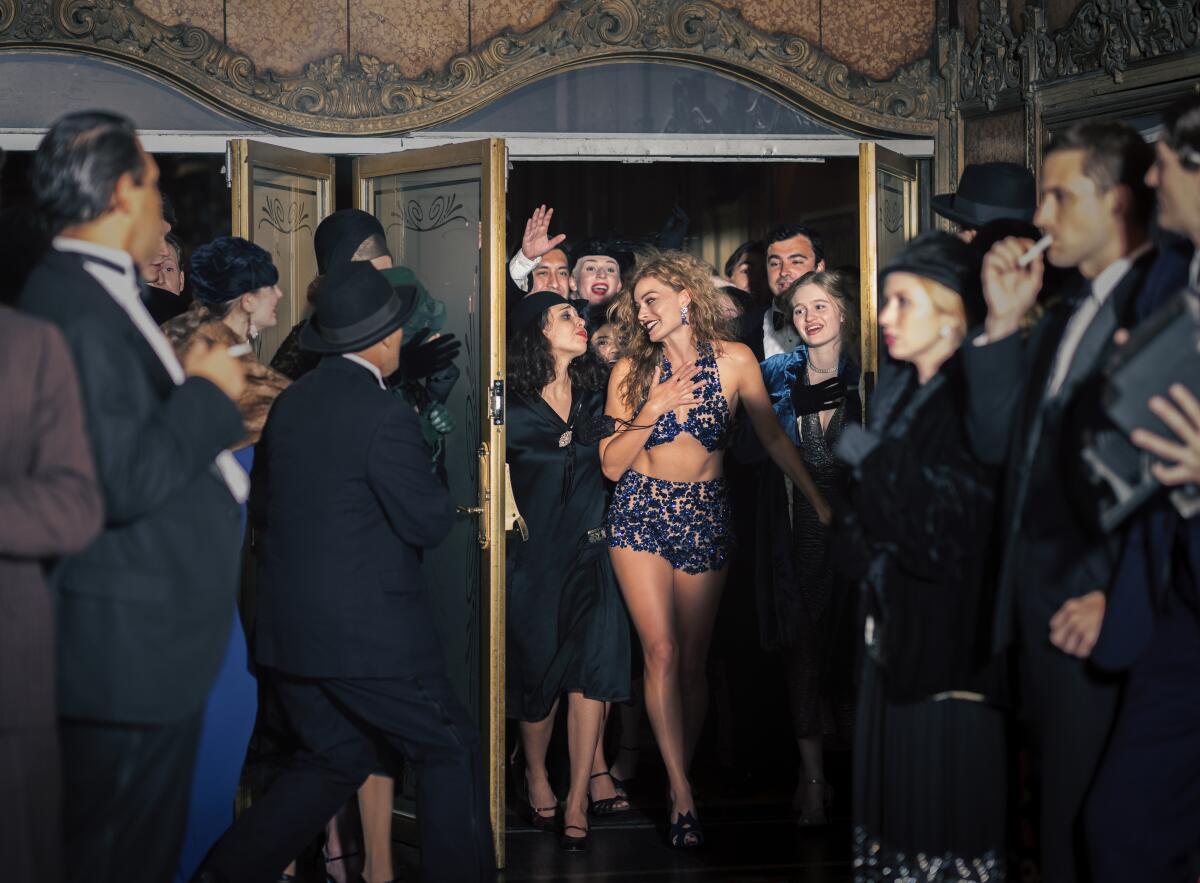
Warning: The following article contains modest spoilers about the fate of some of the characters in âBabylon.â
The Twenties may have roared, but on film they were silent until âThe Jazz Singer.â Released in 1927, the Al Jolson classic launched the era of talkies, an epic transformation requiring studios to remodel stages for sound, revise set protocols for cast and crew and reassess what sort of material worked best with the new technology.
This upheaval forms the backdrop to Damien Chazelleâs delirious take on the period, âBabylon,â which follows a handful of characters attempting to navigate the tricky transition that snuffed out some of Hollywoodâs hottest careers and revolutionized the industry.
Brad Pitt plays Jack Conrad, an alcoholic, womanizing leading man loosely based on John Gilbert, among other actors from that era. Conrad embraces sound as essential to the art form to which he has dedicated his life. Ironically, it does him in.
Margot Robbieâs character, Nellie LaRoy, is a gifted flapper who takes Hollywood by storm. Like Clara Bow, a vivacious young star who built her reputation playing the bad girl, Nellie struggles to stay relevant as the 1920s give way to a decade of Depression, war and uncertainty.
To measure the eraâs fact against fiction, The Times spoke with âBabylonâ director Chazelle, producer Matthew Plouffe and film scholars Annette Insdorf from Columbia University and Jonathan Kuntz from the UCLA School of Theater, Film and Television. Here are their insights.
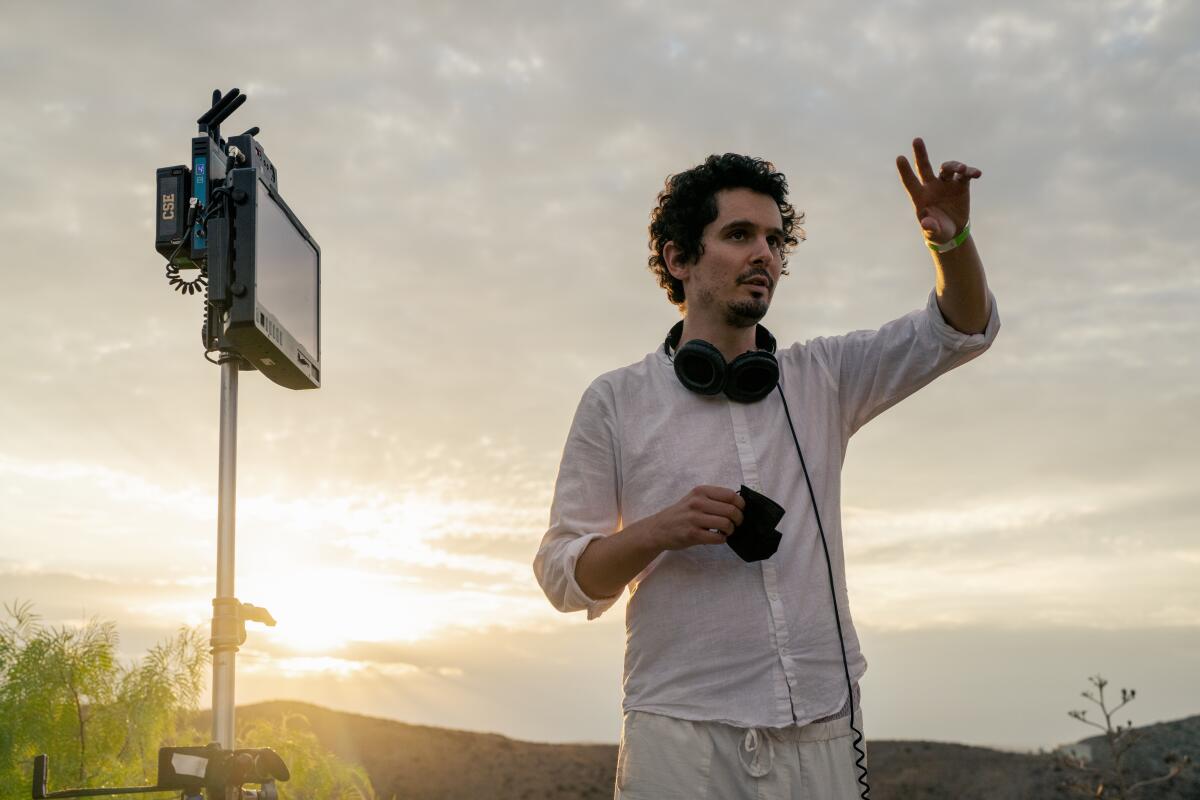
Sound eclipses image
From the early days through the 1920s, the motion picture camera went from being stationary, approximating the audienceâs point of view, to wandering freely in movies like Abel Ganceâs âNapoleon,â King Vidorâs âThe Crowdâ and 1927 Oscar winner âSunrise: A Song of Two Humansâ by F.W. Murnau. The silent camera was hand-cranked, light and relatively quiet. Capturing sound, however, required cameras with noisy motors and muffling âblimpsâ around their bodies, making them unwieldy and relegating them to their former, static positioning.
âThe advent of talkies undercut the rich image as the source of meaning. In addition, street scenes almost disappeared for about 20 years,â Insdorf said. âThey returned when lighter camera equipment was developed in the 1940s, with films like Billy Wilderâs âLost Weekendâ and Jules Dassinâs âThe Naked City.ââ
In fact, cameras were on the move again by 1932. Microphones were hung from mobile booms above the actors, and sound mixing techniques grew more sophisticated, freeing up filmmakers.
Brad Pitt, Margot Robbie and Diego Calva star in Damien Chazelleâs wild tour of the Dream Factory in its 1920s and â30s infancy.
Characters that fell out of fashion
Similar to John Gilbert, Pittâs character sees his stardom vaporize in a few short years. Rumor has it that Gilbert, a leading man in the 1920s, had a high-pitched voice that couldnât cut it in talkies. But thatâs only rumor. More likely, studio honchos saw an opportunity to cut loose an actor with a fat contract when Gilbertâs movies began to stumble at the box office.
âHis whole style and look didnât work in the early â30s,â Kuntz said of Gilbertâs suave, courtly manner. âItâs hard to maintain Hollywood stardom even without the transition to sound. They may have felt that the Clark Gable type â down-to-earth guys that spoke more in a snappy voice than John Gilbert â signified changing styles.â
Both Gilbert and Clara Bow, upon whom Robbieâs character is partially based, had personal issues that hindered their careers. Dubbed the âItâ girl, Bow saw a meteoric rise and fall in the space of a few years.
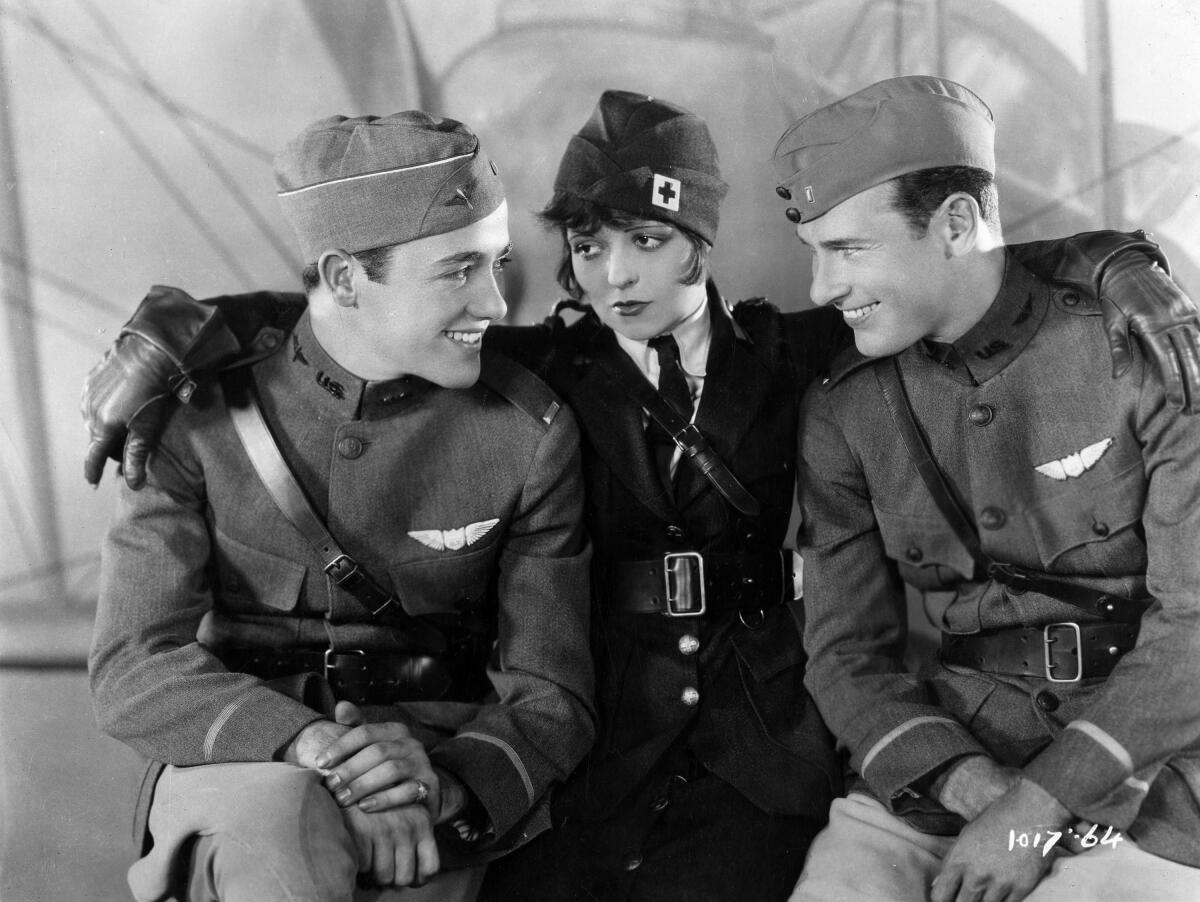
âThat moment where the bad girl went out of style is certainly part of what confronted Clara Bow and wound up screwing her ascent,â said Chazelle. âOnce these changes were in the air, she became more and more aware of the parties she wasnât being invited to anymore.â
Another factor was that Broadway came to Hollywood in 1930, bringing a new breed of actor, including the likes of Spencer Tracy, Katharine Hepburn, Bette Davis and Humphrey Bogart.
No love for Latin-sounding lovers
As depicted in âBabylon,â Hollywood was one of the most diverse communities in the country. Epitomized by Rudolph Valentino and Ramon Novarro, the Latin lover became a standard in the 1920s â but the archetype didnât survive in the 1930s.
âOnce sound comes in, so many of the Latino actors in Hollywood get funneled down to one or two people who can completely hide their accent and their heritage,â noted Chazelle.
Greta Garboâs career accelerated despite her Swedish accent. She made her talkie debut in a now-classic adaptation of Eugene OâNeillâs âAnna Christie,â which was promoted under the tagline âGarbo Talks!â
Jafar Panahiâs âNo Bears,â Todd Fieldâs âTĂĄrâ and Joanna Hoggâs âThe Eternal Daughterâ are among our criticâs favorite films of the year.
âGarbo successfully made the transition to sound in 1930, as did Ingrid Bergman nine years later,â said Insdorf, who suggested that a Scandinavian accent might have been easier for audiences to accept.
âThe accent worked for her. It added to the mystique and mystery,â Chazelle said of Garbo. âBut the number of actors they tried [to market with] âSo and So Speaks!â and it didnât work far outweighs the occasional Garbos we remember who did make the transition.â
Wanted: Generic accents
If foreign accents were tolerated, regional accents were verboten. On film, Georgian Oliver Hardy did not speak like a Southerner, Dick Powell did not sound like a native Arkansan and Barbara Stanwyck hid her Brooklynese. All settled on a mid-Atlantic accent that characterized movie talk for decades.
âBack then they wanted to put up characters that were as generic as possible,â said Kuntz. âThey tried to make everything as relatable to everybody as possible.â
A genre is born
Warner Bros.â âThe Jazz Singerâ was the first movie musical, followed by MGMâs âBroadway Melody of 1929,â the first talkie to win an Oscar. Although the genre was sparked by the development of sound, it was touch-and-go for a while as films were shot with immobile cameras â a turn-off for audiences.
âBy 1930, theyâre pulling musical numbers out of movies and turning them into dramas because the public didnât want to sit back and see it from a distance,â noted Kuntz.
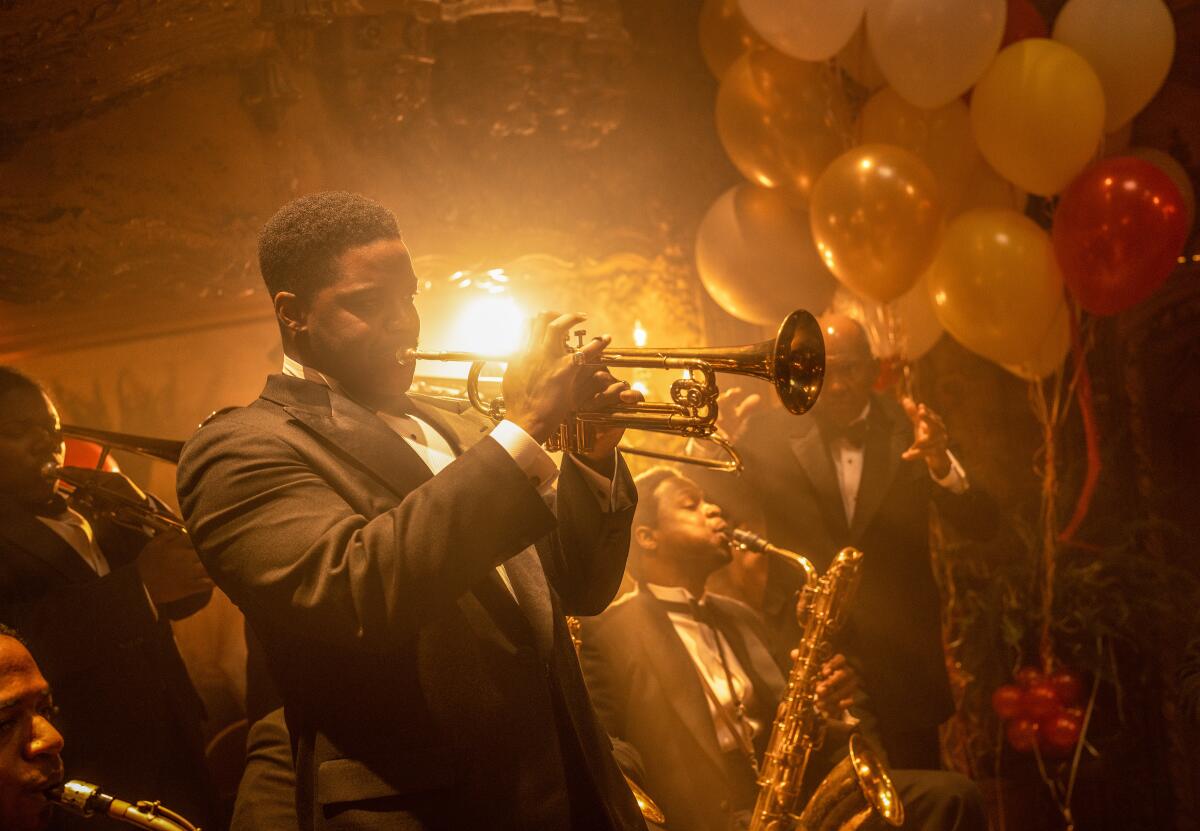
It wasnât until Busby Berkeley arrived on the scene in 1932 that musical numbers regained their dynamism through creative cutting and shot selection, rendering the genre a quintessential cinematic form.
Later revolutions
The closest modern Hollywood has come to a technological revolution on the scale of the shift to talkies was the introduction of digital cameras in the late 1990s. Not only did it force exhibitors to retool theaters â just as the advent of sound had done 70 years earlier â but by the early â00s only a minority of productions were still shooting on film.
âI shoot on film. I like how it captures the light, the color range, the skin tones, especially shooting California light like in âLaLa Landâ and âBabylon,ââ said Chazelle, joining A-listers like Christopher Nolan, Quentin Tarantino and Steven Spielberg who continue to rely on film stock. (Chazelleâs first movie, âWhiplash,â was shot on digital, however.)
Whitewashing or reclaiming? A new Whitney Houston biopic spotlights musical highs over personal lows
âI Wanna Dance With Somebodyâ is part of a broader effort to reframe Houstonâs legacy in the years after her death.
âTheyâre sort of the Chaplin and Lillian Gish of the modern era, and they have a point,â said Kuntz, name-checking the most prominent silent-film holdouts. âThereâs nothing like 35mm film. But itâs also commingled with the theatrical film experience going away. And losing that is significant. Once that goes, itâs not exactly the same Hollywood it was for 100 years.â
Is the sky still falling?
In the 20th century, some in the film industry feared that TV would kill the movies, yet they survived. Now, streaming services like Netflix appear to be drawing audiences away from the big-screen experience. But Chazelle isnât among the doomsayers.
âIf you look at the â50s, that was part of the subtext behind âSinging in the Rainâ being made â television threatening the moviegoing experience,â said Chazelle of the Gene Kelly classic, which plays a prominent part in âBabylon.â âI guess I remain an optimist that the core thing of people getting together in a dark room to communally experience a movie, that will continue to survive.â
More to Read
Only good movies
Get the Indie Focus newsletter, Mark Olsen's weekly guide to the world of cinema.
You may occasionally receive promotional content from the Los Angeles Times.
